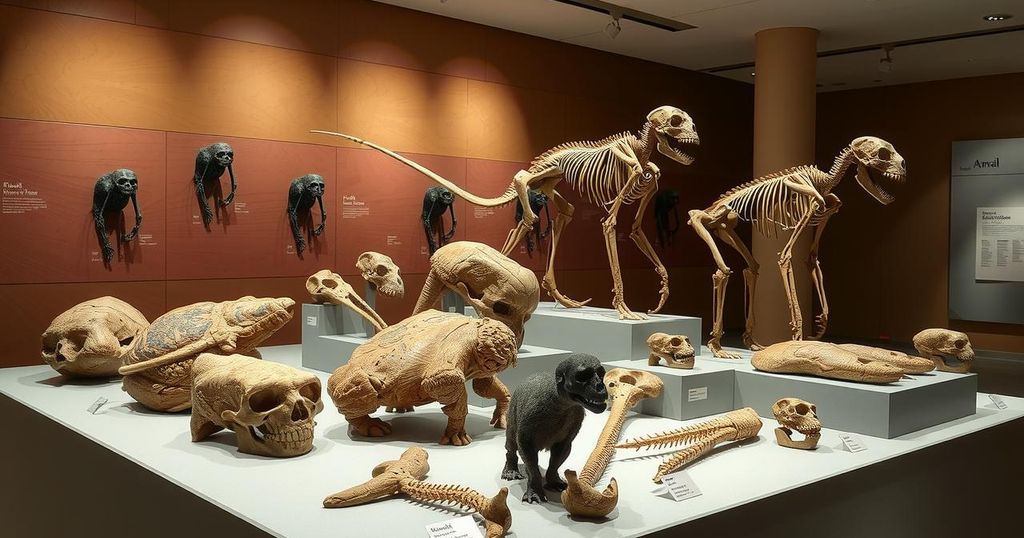AI Integration Marks a Revolution in the Nuclear Industry
Atomic Canyon and Oak Ridge National Laboratory are pioneering AI in the nuclear industry by developing a specialized model to understand complex nuclear terminology from extensive datasets. This innovation is expected to significantly enhance operational efficiency, improve safety protocols, and foster collaboration within the sector, positioning nuclear energy as a key player in meeting future energy demands.
In a groundbreaking collaboration, startup Atomic Canyon joined forces with Oak Ridge National Laboratory to harness the vast universe of nuclear terminology by employing artificial intelligence. This innovative approach involved training AI using a massive dataset, encompassing 53 million pages from Nuclear Regulatory Commission documents. The nuclear industry, often perceived as slow-moving due to stringent regulations and safety protocols, is now on the brink of significant transformation as it embraces advanced technologies, particularly AI, to enhance operational efficiency and safety.
Trey Lauderdale, the visionary CEO of Atomic Canyon, emphasizes the importance of robust datasets for AI development. He acknowledges the nuclear sector’s treasure trove of information, painstakingly curated in the NRC’s ADAMS database. However, traditional AI models struggled with the specialized language of nuclear engineering, leading to inaccuracies. Thus, Atomic Canyon pivoted to create sentence-embedding models that accurately interpret complex nuclear terms. Through the exceptional capabilities of ORNL’s Frontier supercomputer, previously dubbed the fastest in the world, the team cultivated an AI model that now facilitates advanced search functions within nuclear documentation, paving the way for improved processes.
This new AI model is open-source, promoting a collaborative atmosphere within the nuclear community, quite a shift from the competitive nature observed in other sectors. Lauderdale illustrates this ethos perfectly, stating, “An accident at any plant is an accident at every plant,” underscoring the industry’s commitment to sharing vital information for collective safety. By allowing others, including competitors, to build on their foundation, Atomic Canyon aims to propel the entire nuclear space forward.
Lauderdale predicts that this initial step with AI is merely the beginning. As nuclear energy becomes increasingly necessary to meet the growing demands of an energy-hungry world, especially for data centers, the potential for AI to enhance operational capabilities in nuclear plant management grows. Both he and Tom Evans from ORNL agree that AI can meaningfully contribute to expediting complex licensing processes and refining design analyses through improved data retrieval methods.
Looking ahead, Atomic Canyon envisions integrating AI into proprietary datasets held by various nuclear companies, essentially bridging the gap between innovation and practical application. This proactive stance poses a promising outlook: the nuclear industry, often viewed as cumbersome and slow, is poised to not only catch up with technological advances but potentially lead the charge in the AI revolution. With a wealth of documented information, the nuclear field stands as a fertile ground for groundbreaking AI developments that might illuminate new pathways, offering hope for a greener, more efficient energy future.
The intersection of artificial intelligence and the nuclear industry marks an exciting frontier capable of redefining how nuclear power operates. Traditionally characterized by meticulous processes and regulatory scrutiny, the nuclear sector has begun to adopt digital innovation to streamline workflows and improve safety. This evolution is crucial as the global energy demands rise, making the integration of AI not just beneficial, but essential for optimizing existing frameworks and preparing for future challenges in energy management and production.
The exploration of AI in the nuclear sector signals a transformative era where safety, efficiency, and collaboration intersect. Through initiatives like Atomic Canyon’s partnership with ORNL, the nuclear industry is set to leverage its extensive datasets to craft sophisticated AI tools capable of enhancing operational processes and fostering innovation. This journey, while still in its infancy, holds great potential for reshaping the future of energy production amidst escalating global energy requirements, highlighting the nuclear domain’s emerging role as a leader in technological advancement.
Original Source: www.powermag.com




Post Comment